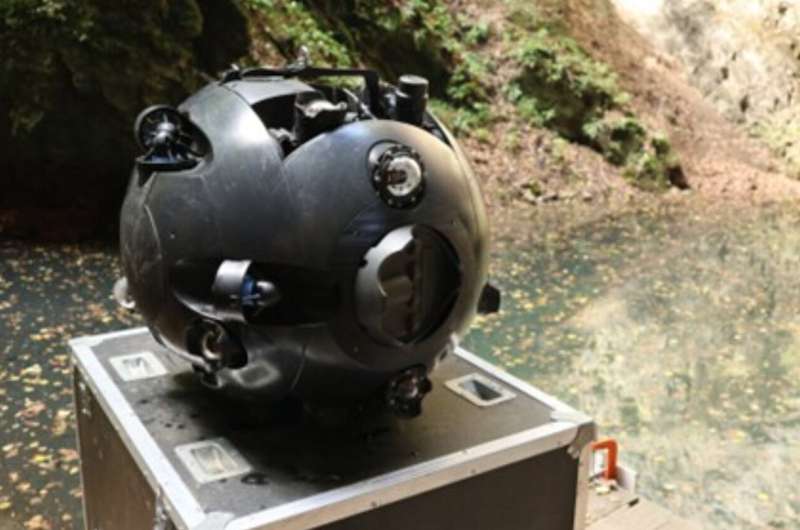Robot helps researchers achieve a new record at the world's deepest cave pit

A small city in the east of Czechia called Hranice harbors a unique natural wonder that is not (yet) trending on Instagram. The Hranice Abyss is the deepest underwater cave pit in the world, and a team of researchers recently beat a record by revealing more about its depth.
It is believed that this cave pit was formed by the collapse of the ground layer, a structure called a sinkhole, which reveals the vertical great mass of water underneath. The latest estimates based on the temperature and chemical analysis of the water indicate that the abyss can be more than 1000 meters deep.
There have been many expeditions that tried to discover more and more about the Hranice Abyss. The first maps were produced based on divers' observations up to around 180 meters in depth. In 2014, Krzysztof Starnawski reached 217 meters and launched a probe from that position that reached 384 meters. Even though it reached far beyond what would be humanly possible, it could not yet get a glimpse of the bottom of the cave.
On the first of August, a team of Portuguese researchers from the Institute for Systems and Computer Engineering, Technology and Science (INESC TEC) in collaboration with the Czech Speleological Society, UNEXMIN GeoRobotics and the University of Miskolc deployed a robot called UX-1Neo that was able to reach 450 m.
UX-1Neo is a hybrid ROV/AUV robot that can operate either autonomously or with remote supervision. Its advanced navigation and sensors allow it to obtain a precise perception of the environment and to know its position precisely, this was proven to be a crucial advantage in exploring the Czech wonder.
In addition to breaking the exploration record, UX-1Neo provided a detailed map of the cave, which was impossible to achieve before.
"The Remotely Operated Vehicle—ROV did not have a positioning and navigation system, so it could only be piloted by a very experienced operator, based on the images transmitted by the robot," explains Alfredo Martins, researcher from INESC TEC. UX-1Neo stands out for being an "underwater robot with precise positioning, and having unique characteristics allowing it to perform missions where no other robot can operate".
The autonomous sci-fi-looking diver robot
The exploration of underwater caves is not exactly straightforward. For starters, they are not straight but rather narrow zig-zagging tunnels where the light gets dimmer and dimmer as one gets farther from the surface. Also, the geological structures might be unstable and even collapse, which presents a serious threat to both divers and robots, not to mention branches, twigs, and other debris that the dark waters hide and can get explorers and vehicles stuck in its depth.
The UX-1Neo is packed with features that make it the most technologically advanced underwater vehicle considering its volume and weight. It has built-in sonars, cameras, thrusters, structured light systems, floating systems and much more. It even also features a Hyperspectral unit that collects and processes information from across the electromagnetic spectrum. But what can these sensors tell about the pits and caves the UX-1Neo can explore?
"The UX-1Neo incorporates six structured light systems that allow us to build a detailed 3D map of the area we are exploring. During our mission in Czechia, we were able to create such a map in two days, something that the community has been trying to achieve for 50 years", adds Alfredo Martins.
"The mission made it possible to successfully explore the cave up to 450 meters," achieving the UNEXUP project's goals which are "to create a new mine mapping service based on a new class of autonomous underwater robots capable of exploring up to a thousand meters of depth, obtaining relevant information such as structural state and map of the same (allowing to know if there were landslides or other problems) and geological information important to determine existence of mineral resources of economic interest, which would otherwise be more difficult and dangerous to obtain or would have higher costs."
Exploring caves is driven by the human longing for the unknown. Underwater cave pits, especially those as deep as the one found in Hranice, are portals to the history of the planet. Its dark and cold waters contain raw information about how the planet and life have evolved, usually with little or no human intervention at all. It is fascinating that Voyager 1 will explore space 10.4 billion kilometers away, but we still have so many mysteries to unravel in our pale blue dot.



















